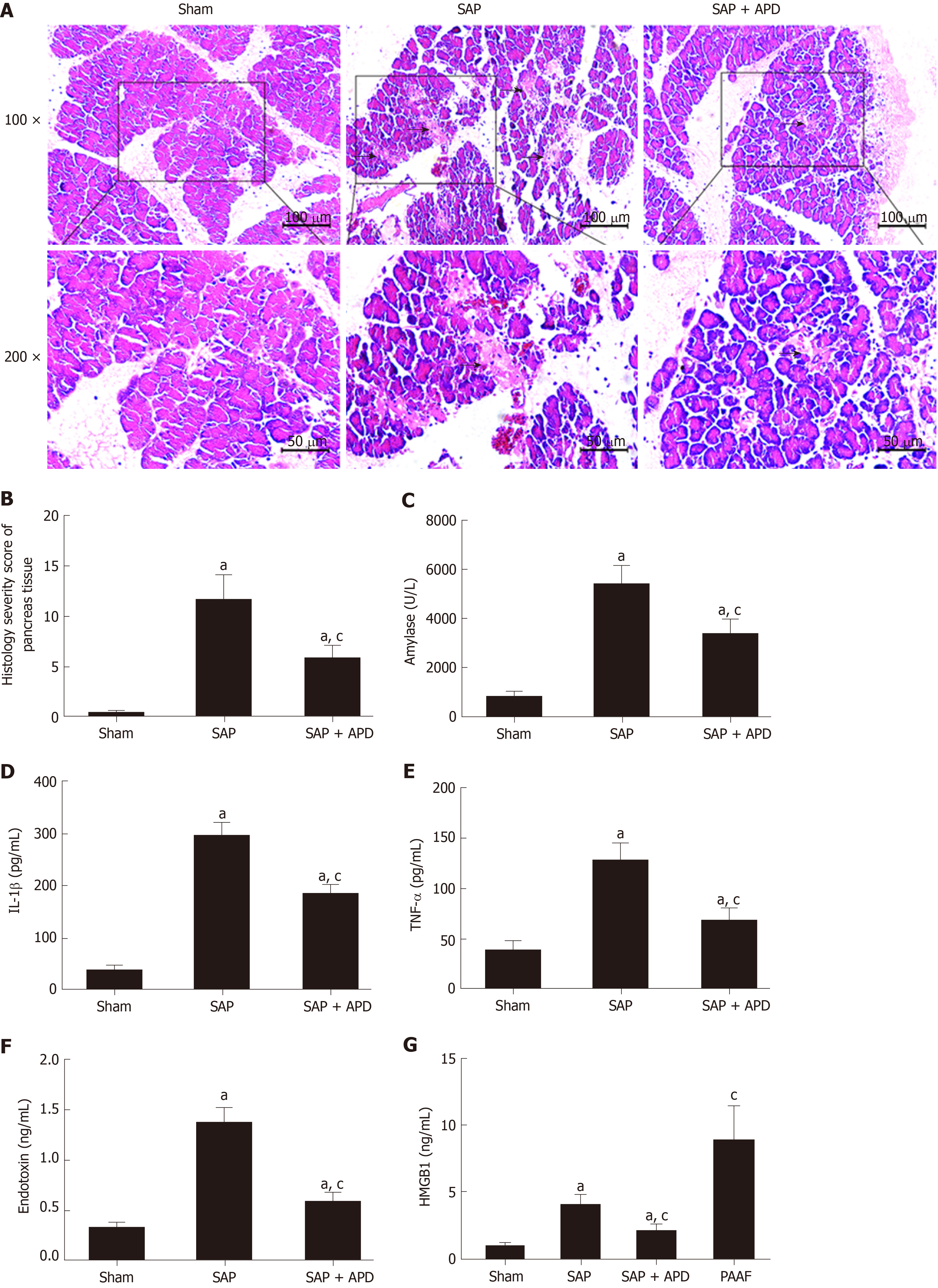Copyright
©The Author(s) 2020.
World J Gastroenterol. Jan 7, 2020; 26(1): 35-54
Published online Jan 7, 2020. doi: 10.3748/wjg.v26.i1.35
Published online Jan 7, 2020. doi: 10.3748/wjg.v26.i1.35
Figure 6 Effects of abdominal paracentesis drainage on pancreatic histopathology and proinflammatory cytokines.
A: Representative micrographs of hematoxylin-eosin stained sections of rat pancreatic tissue from different groups. Images were taken under 100 × and 200 × magnification. The arrow indicates necrotic pancreatic tissue; B: Histology severity score of pancreas; C: Amylase; D: Interleukine-1 beta; E: Tumor necrosis factor alpha; F: Endotoxin; G: High mobility group box 1. Data indicate the mean ± standard deviation obtained from six animals in each group (C-G). aP < 0.05 vs sham group; cP < 0.05 vs severe acute pancreatitis group. IL-1β: Interleukine-1 beta; TNF-α: Tumor necrosis factor alpha; HMGB1: High mobility group box 1; PAAF: Pancreatitis associated ascitic fluids; SAP: Severe acute pancreatitis; APD: Abdominal paracentesis drainage.
- Citation: Wen Y, Sun HY, Tan Z, Liu RH, Huang SQ, Chen GY, Qi H, Tang LJ. Abdominal paracentesis drainage ameliorates myocardial injury in severe experimental pancreatitis rats through suppressing oxidative stress. World J Gastroenterol 2020; 26(1): 35-54
- URL: https://www.wjgnet.com/1007-9327/full/v26/i1/35.htm
- DOI: https://dx.doi.org/10.3748/wjg.v26.i1.35









